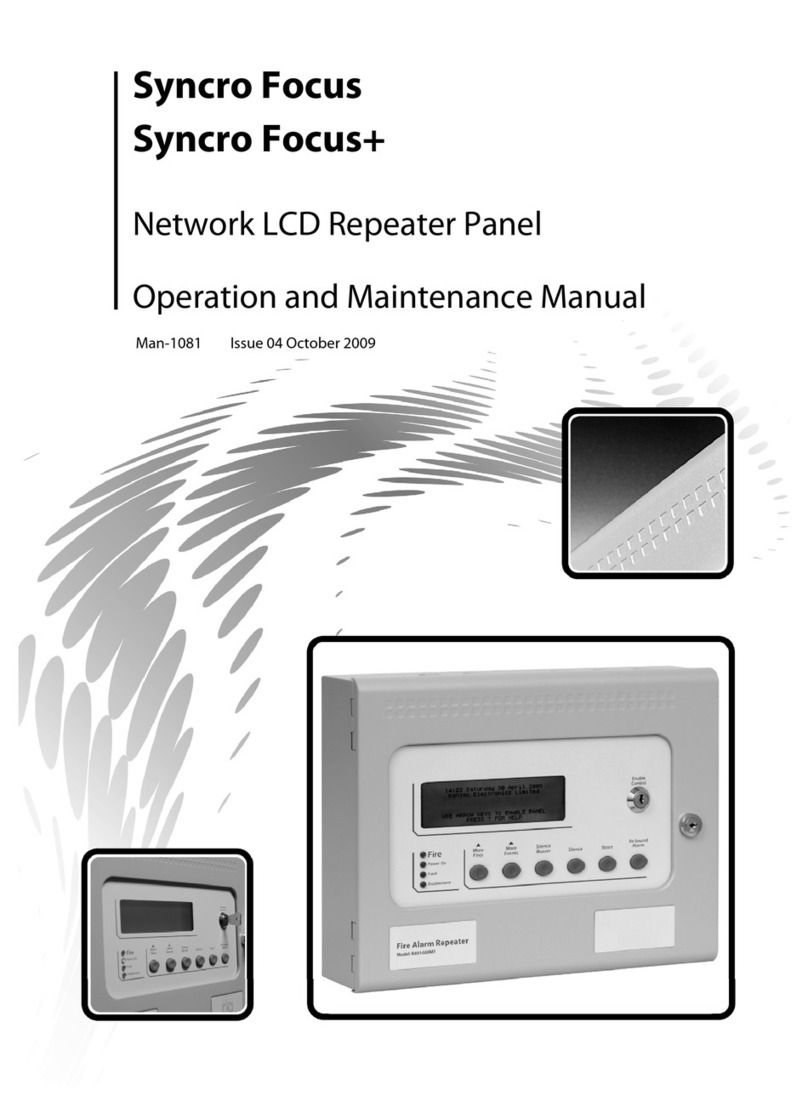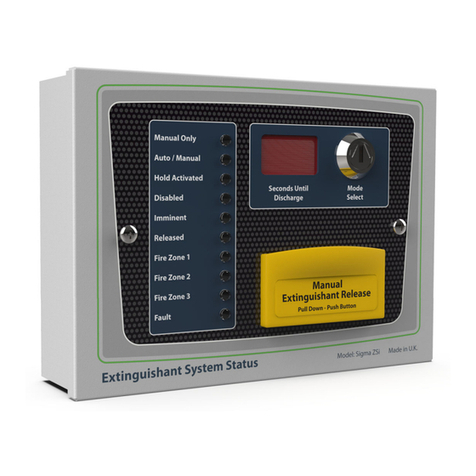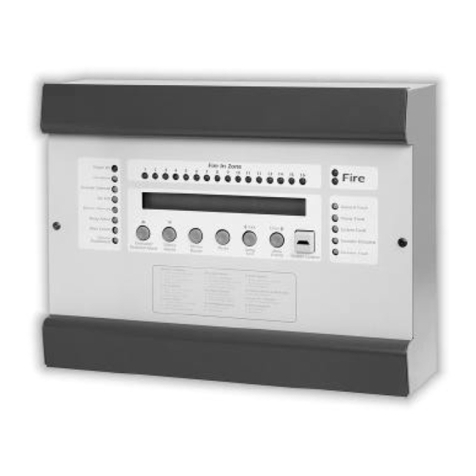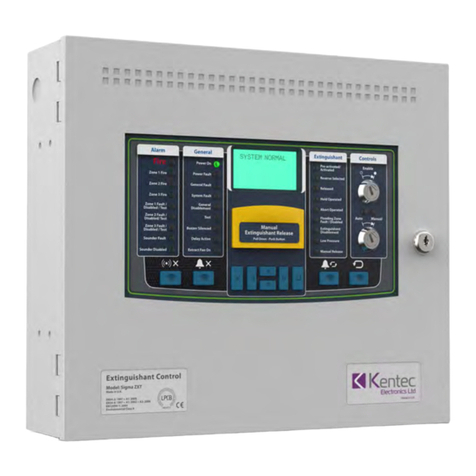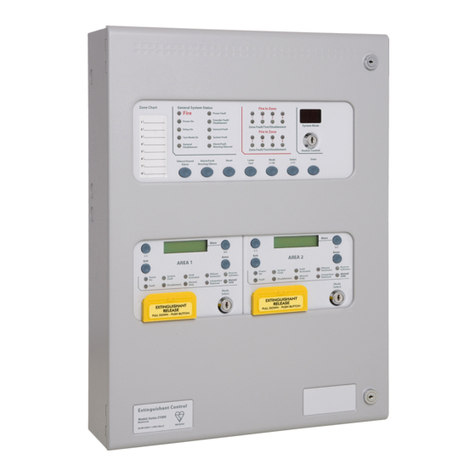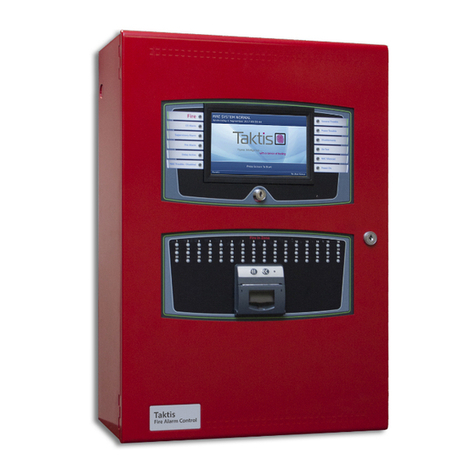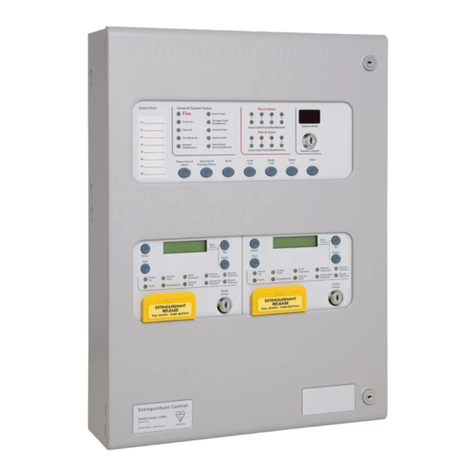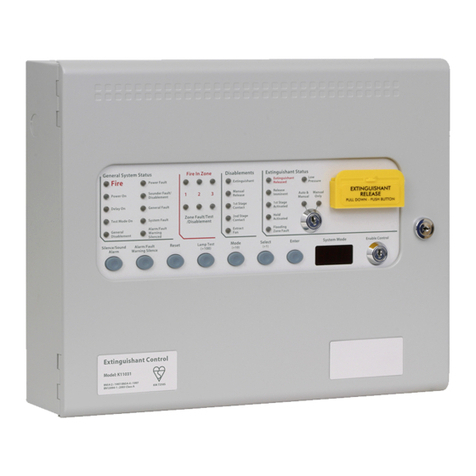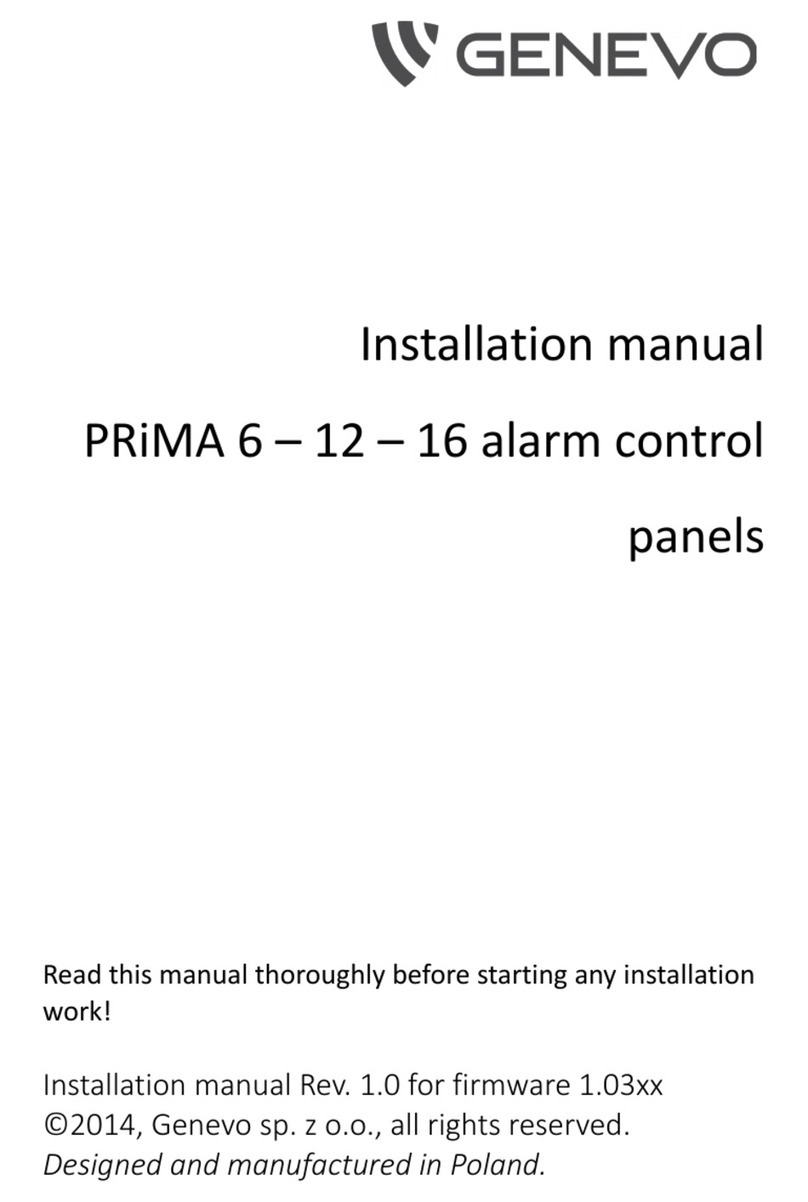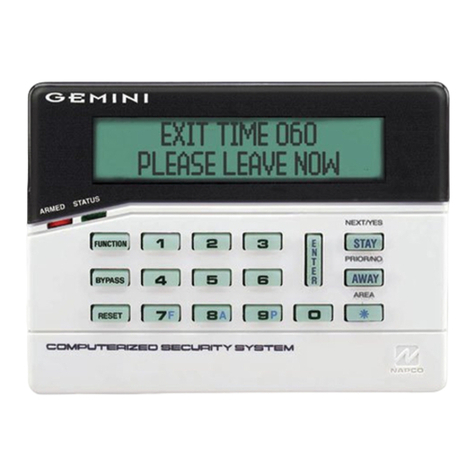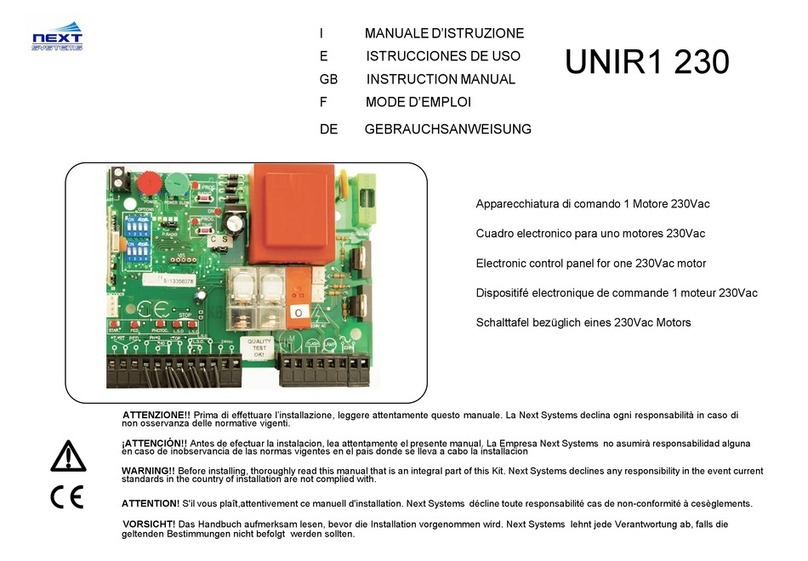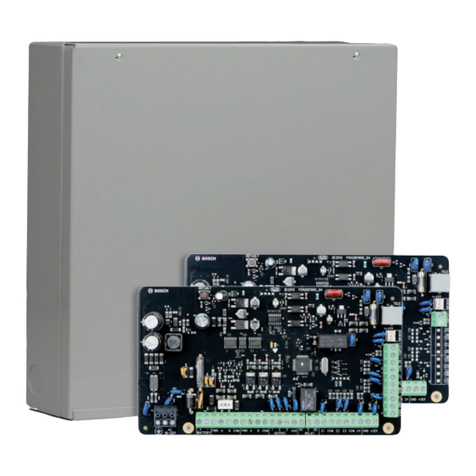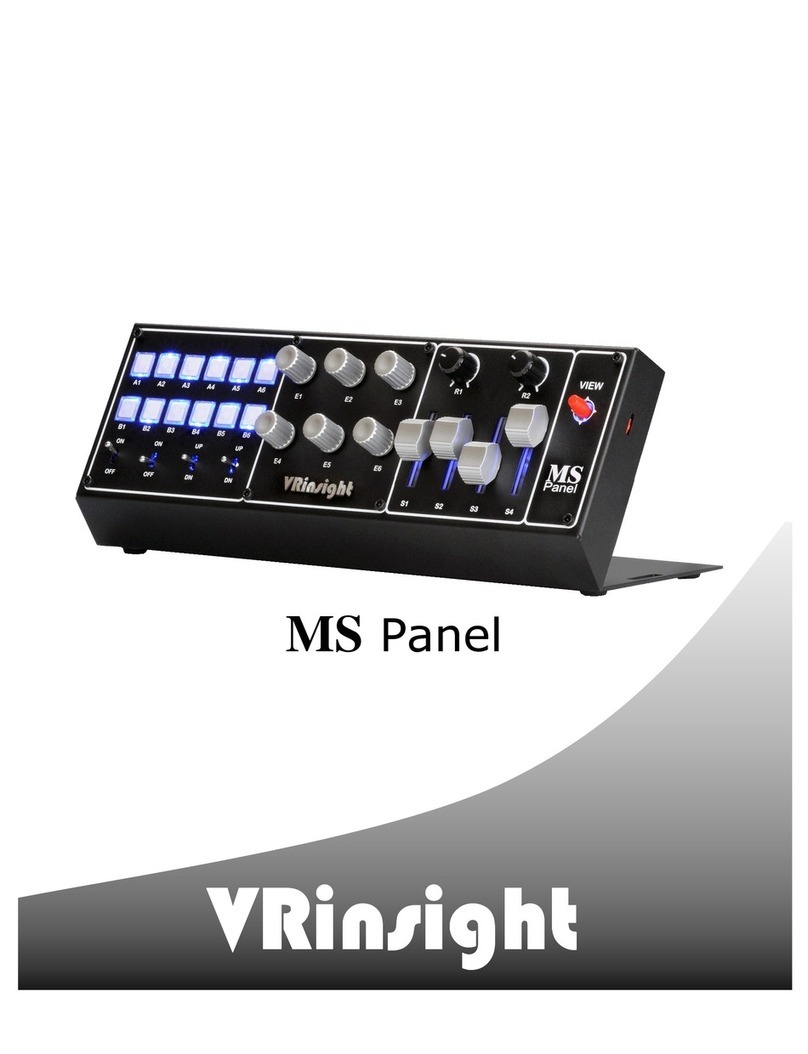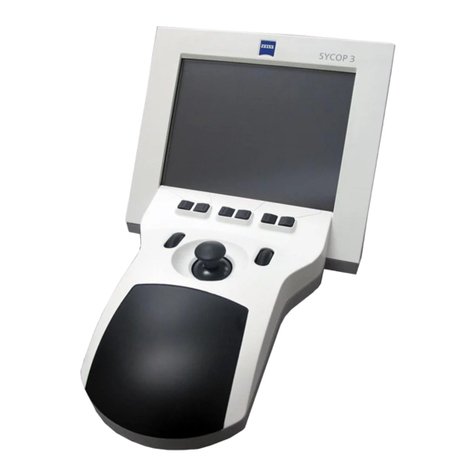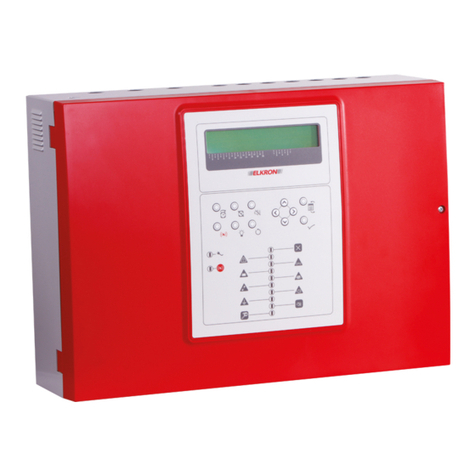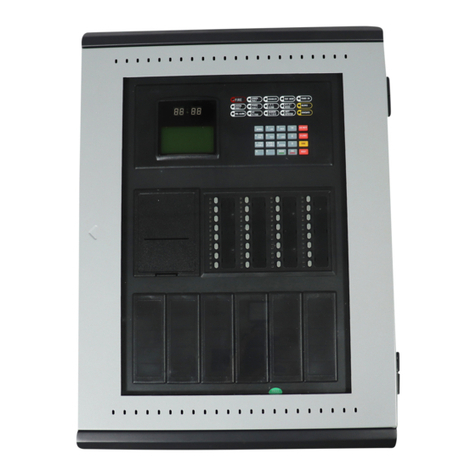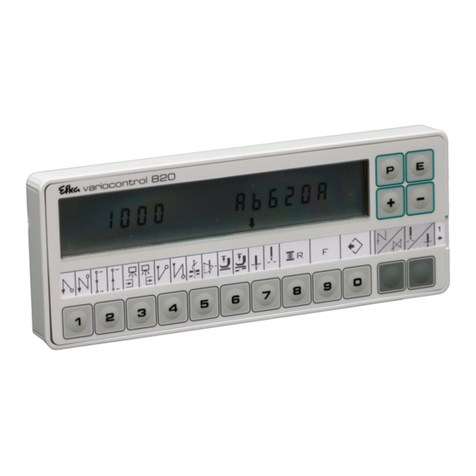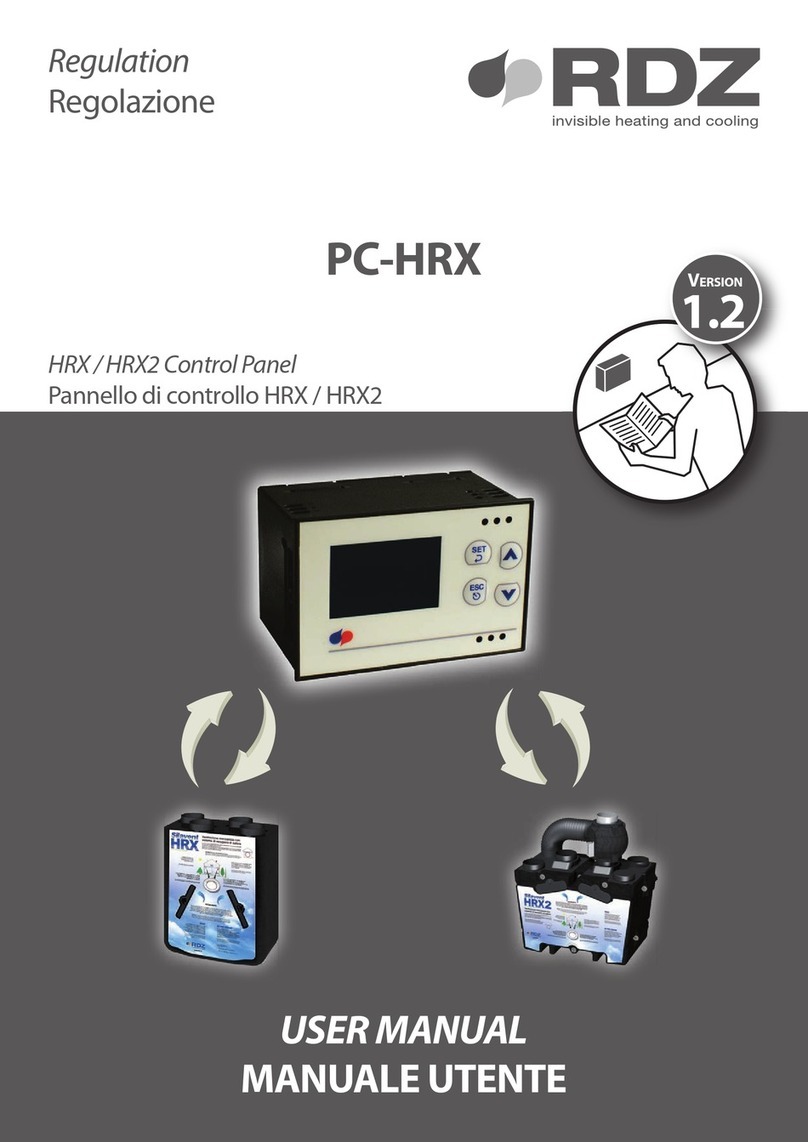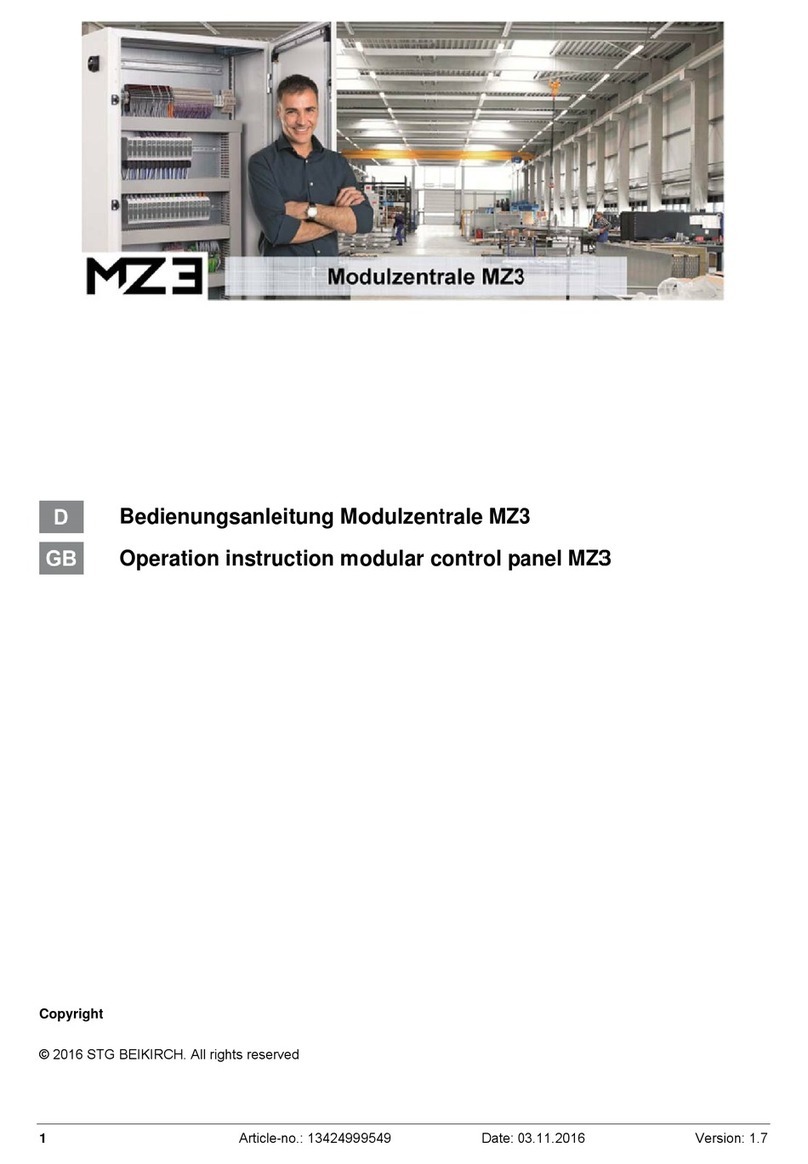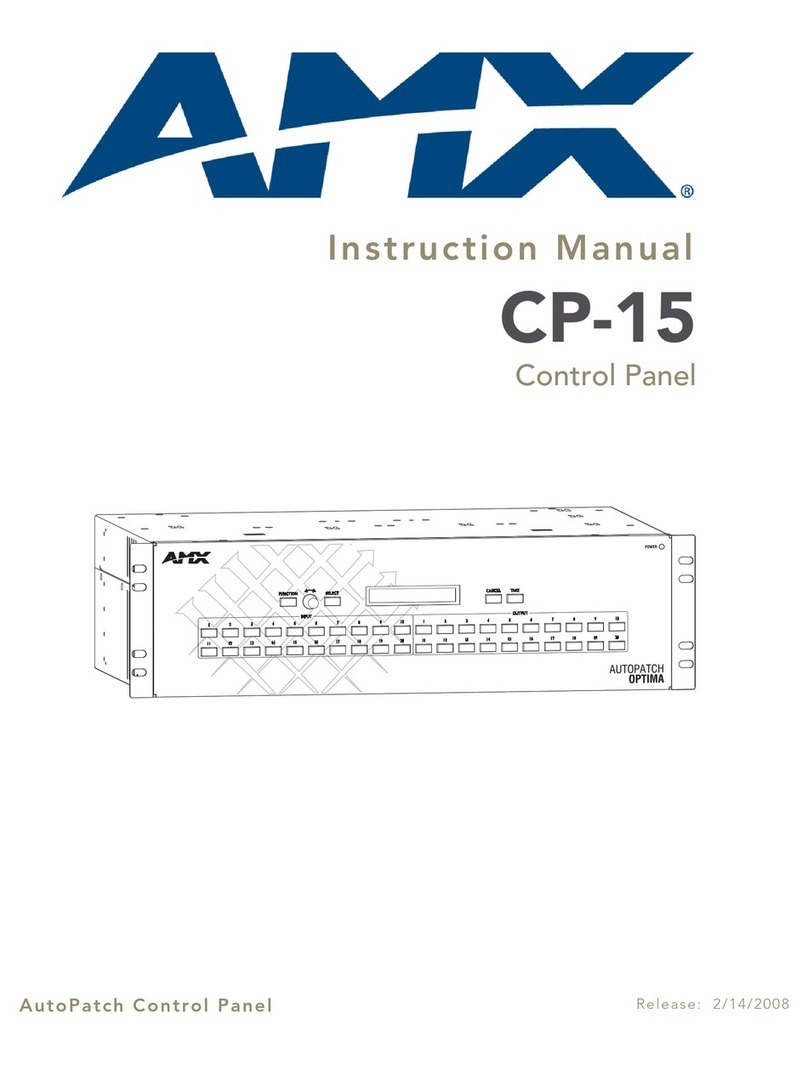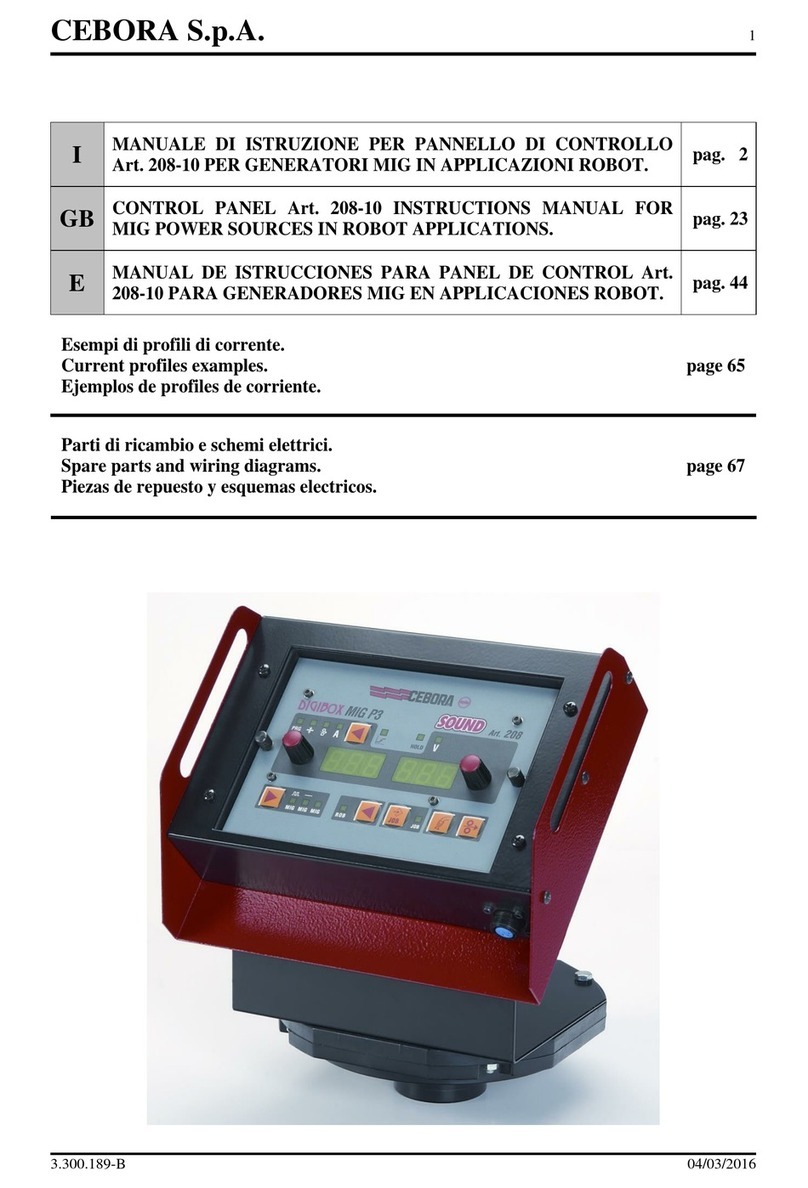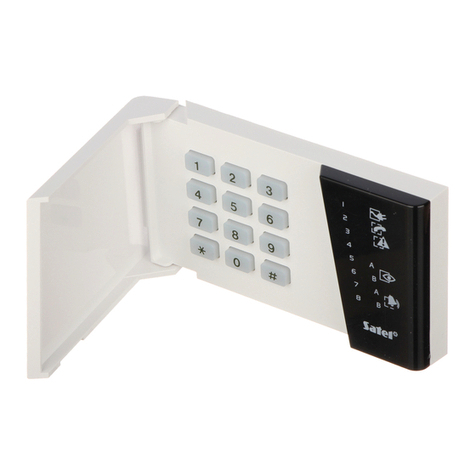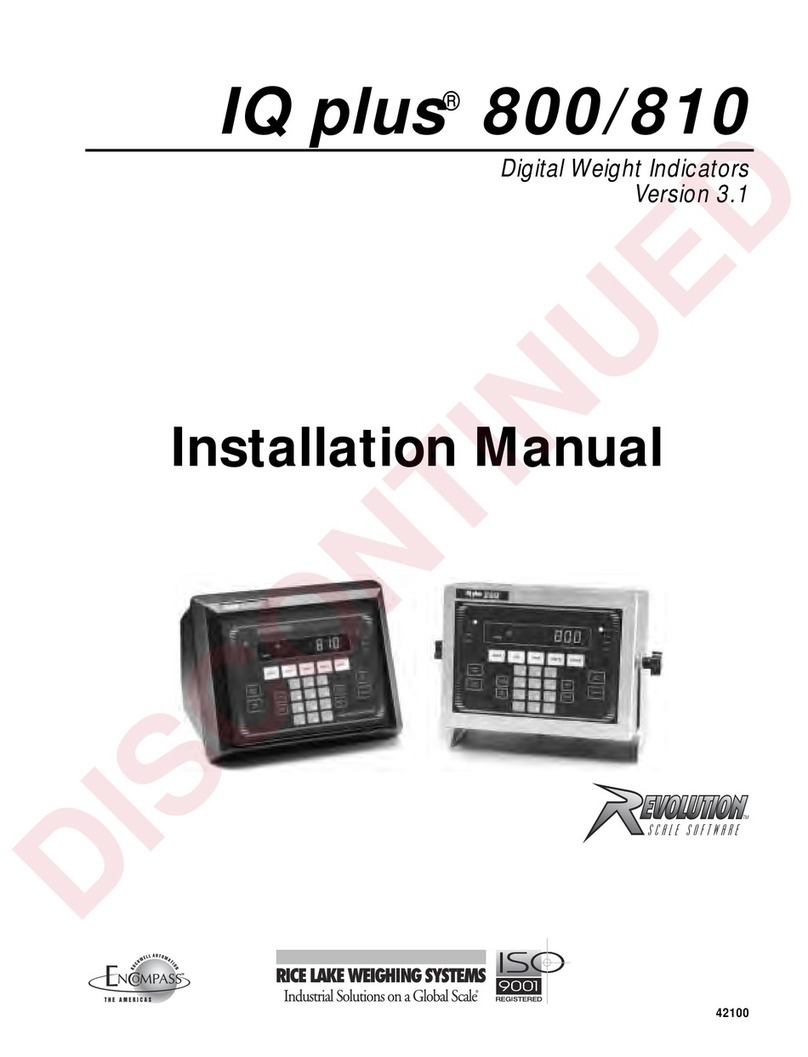
Product Manuals/Man-1092M_Syncro_View_Marine_03 Page 8 of 13
5. Connecting to the circuit board
All connections for field wiring are to a single row of terminals along the bottom of the circuit
board.
Shielded fire alarm cable such as FP200 and metal cable glands must be used for all
connections to the unit. The resistance of any core of the data cable must not exceed 25
ohms. The shield of the cable must be bonded securely to the enclosure via the metal gland.
Wiring should enter the enclosure at the top or back of the unit using the knockouts provided
and be formed tidily to the appropriate terminals.
Terminals are capable of accepting wires of up to 2.5mm2.
Wiring must not go across the front of the circuit board. If cable entries need to be in positions
other than at the knockouts provided, wiring must be fed well away from the surface of the
circuit board.
6. Power and data connections
Each unit requires two cores for power and two cores for data transmission to and from the
control panel. A four core cable may be used for these connections. All of these connections
are polarity conscious and care should be taken to match the polarity with the corresponding
terminals at the control panel. Mains powered versions require only a two core cable to the
control panel and a local mains supply.
Data Termination
Up to 15 units can be connected to a Syncro ASM control panel. In and out terminals for data
and 24V DC are provided on each unit.
All units are supplied with a push on jumper fitted at position J3 on the left hand side of the
PCB. This jumper connects a terminating resistor which needs to be in place at the last unit on
the data line. If more than one unit is to be fitted, then the jumpers must be removed from
all units except the last one.
If there is only one unit fitted then the jumper should be left in place. The COMMS LED will
flash quickly while the unit is communicating correctly with the control panel and will be off if
the unit is disconnected or connected incorrectly.
7. Addressing the units
To enable the control panel to know whether any units that should be connected have been
disconnected and indicate a fault condition, each unit must be allocated an address. The
address switch should never be set with all switches off.
This is done by setting a binary number from 1 to 5 on the 4 way, DIL switch located at the
bottom of the PCB.
The order of the addresses is not important but each unit must be allocated a different
address.
The switch settings for each of the addresses are shown below.
8. Processor and watchdog reset switches
The Syncro View is controlled by a microprocessor, which will re-start itself and continue to
run if it stops for any reason due to severe electrical interference such as an electrical storm.
